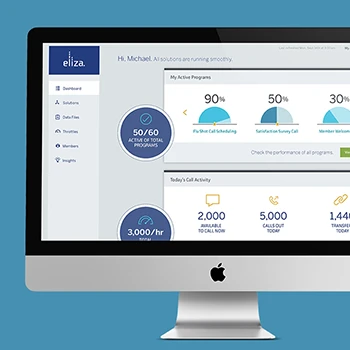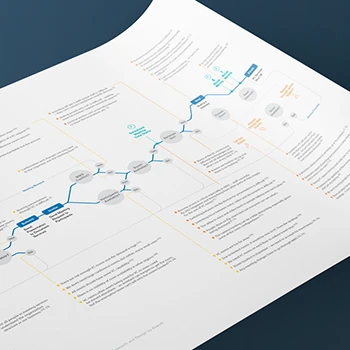What makes service experience prototyping different from traditional product prototyping?
Service experience prototyping creates testable representations of complete service journeys, not just individual touchpoints. While product prototyping focuses on interface interactions, service prototyping tests the human, product, and spatial aspects of service experiences using methods like service staging, service walkthrough, and service role playing. We prototype how people move between touchpoints, how staff deliver service experiences, and how environmental factors affect service quality across the complete journey.
Tip: Plan service prototyping to test cross-touchpoint experiences and human interactions rather than just digital interface elements to understand complete service experience quality.
How does service prototyping support the Experience Thinking framework?
Service prototyping within Experience Thinking creates testable representations of how brand, content, product, and service experiences work together. We prototype brand personality expression through service interactions, content flow effectiveness, product integration within service journeys, and service delivery coordination. This holistic approach reveals how service experiences connect to and support the complete experience ecosystem rather than optimizing service touchpoints in isolation.
Tip: Design service prototypes that test how brand promise, content strategy, product functionality, and service delivery align rather than just validating individual service interactions.
What business risks does service experience prototyping help mitigate before implementation?
Service prototyping de-risks investment by validating service concepts before building operational infrastructure, staff training programs, and technology systems. We test whether proposed service experiences actually improve customer relationships, reduce operational costs, and support business goals. Prototyping reveals operational challenges, staff capability requirements, and technology needs before costly implementation commitments. This helps avoid building services that don't deliver intended value.
Tip: Use service prototyping to validate business model assumptions and operational feasibility alongside user experience quality to ensure service investments deliver expected returns.
When in the service design process should prototyping begin and how does it evolve?
Service prototyping begins early with conceptual methods during strategy phases and evolves to detailed experience specifications during delivery phases. Early prototyping tests service concepts and journey flows using low-fidelity methods. Later prototyping validates detailed service interactions, staff procedures, and technology integration using high-fidelity methods. The Experience Thinking approach ensures prototyping addresses service connections to brand, content, and product experiences throughout the process.
Tip: Start service prototyping during strategy development with low-fidelity methods rather than waiting until detailed design phases to identify major concept issues early.
How does service prototyping address both customer-facing and operational aspects of service delivery?
Service prototyping tests complete service ecosystems including customer journeys, staff workflows, operational processes, and technology systems working together. We prototype customer-facing interactions alongside back-office processes, staff training scenarios, and operational procedures. This reveals how operational design affects customer experience quality and where operational improvements can enhance service delivery. Prototyping ensures service experiences are feasible to deliver consistently.
Tip: Include operational staff and back-office processes in service prototyping sessions to understand implementation challenges and service delivery consistency requirements.
What role does foresight design play in service experience prototyping?
Foresight design in service prototyping creates testable service concepts for future scenarios, emerging user behaviors, and evolving market conditions. We prototype service experiences that adapt to changing user needs, test service concepts against multiple future scenarios, and validate service strategies for long-term relevance. This helps design service experiences that remain valuable as markets evolve rather than just solving current service problems.
Tip: Include scenario-based prototyping that tests how proposed service experiences would perform under different future market conditions and user behavior changes.
How do you determine the right fidelity level for different service prototyping objectives?
Prototype fidelity depends on testing objectives, stakeholder needs, and implementation timeline. Low-fidelity prototyping using service staging and role-playing works for concept validation and early stakeholder alignment. High-fidelity prototyping with realistic service environments and actual service tools validates detailed interactions and operational procedures. The Experience Thinking framework helps determine which experience areas need high-fidelity testing versus conceptual validation.
Tip: Match prototype fidelity to decision requirements rather than defaulting to high-fidelity methods - early concept validation often needs simple prototyping approaches that enable rapid iteration.
What service prototyping methods work best for testing complete customer journeys?
Journey prototyping combines service staging, service walkthrough, and service role playing to test end-to-end customer experiences. Service staging creates realistic service environments for customers to experience proposed service interactions. Service walkthrough guides customers through service scenarios while observing their responses. Service role playing tests service interactions from both customer and staff perspectives. These methods reveal journey flow issues and emotional experience patterns.
Tip: Combine multiple service prototyping methods in single testing sessions to understand customer journeys from different perspectives and identify experience gaps that single methods might miss.
How do service staging techniques create realistic service experience testing environments?
Service staging creates physical or simulated service environments using mock-up spaces, stand-in service artifacts, and realistic service scenarios. We set up service touchpoints, train staff in prototype service delivery, and create environmental conditions that simulate actual service contexts. Service staging tests how spatial design, service tools, and environmental factors affect service experience quality. This reveals design requirements that abstract prototyping methods cannot capture.
Tip: Include realistic environmental factors like noise, time pressure, and spatial constraints in service staging to understand how real-world conditions affect service experience quality.
What makes service walkthrough prototyping effective for validating service design concepts?
Service walkthrough prototyping guides stakeholders and customers through proposed service experiences step-by-step, testing service logic, emotional responses, and practical feasibility. We create service scenarios that customers experience while researchers observe their reactions, questions, and suggestions. Service walkthrough reveals conceptual issues, missing service elements, and emotional journey patterns before detailed implementation. This method validates service strategy before operational investment.
Tip: Use service walkthrough prototyping with diverse customer types to understand how service concepts work for different user needs and contexts rather than just primary user scenarios.
How does service role playing test both customer and staff perspectives of service interactions?
Service role playing allows stakeholders to experience service interactions from multiple perspectives - as customers receiving service and as staff delivering service. We create realistic service scenarios where participants act out service interactions, experience emotional responses, and identify practical challenges. Role playing reveals empathy insights, operational difficulties, and interaction design improvements that other prototyping methods miss. This validates service design from all stakeholder perspectives.
Tip: Include actual frontline staff in service role playing sessions to validate service procedures and identify training needs alongside customer experience testing.
What prototyping approaches work best for services that span multiple channels and touchpoints?
Multi-channel service prototyping creates integrated testing environments that simulate transitions between digital touchpoints, physical locations, and human interactions. We prototype channel handoffs, information continuity, and experience consistency across touchpoints. Testing includes digital prototypes, physical service staging, and communication scenarios that validate cross-channel service journeys. This ensures service experiences feel connected rather than fragmented.
Tip: Focus multi-channel prototyping on transition moments between touchpoints where service experience consistency is most vulnerable to breakdown rather than optimizing individual channels in isolation.
How do you prototype services with complex operational workflows and staff interactions?
Complex service prototyping combines service blueprinting with operational simulation to test staff workflows, service procedures, and customer interactions simultaneously. We create realistic operational scenarios, train staff in prototype procedures, and test service delivery under various conditions. Prototyping includes back-office processes, staff communication, and operational tools alongside customer-facing interactions. This validates service design operational feasibility and quality consistency.
Tip: Include operational staff in complex service prototyping to validate workflow design and identify staff training requirements early rather than discovering operational issues after implementation.
What digital prototyping tools integrate effectively with physical service experience testing?
Hybrid service prototyping combines digital interaction prototypes with physical service staging to test complete service experiences. We use interactive prototyping tools for digital touchpoints while creating physical service environments for spatial and human interactions. Digital prototypes integrate with service staging to test cross-channel experiences and technology-mediated service delivery. This approach validates how digital and physical service elements work together.
Tip: Design digital service prototypes that can integrate with physical service testing rather than prototyping digital and physical service elements separately to understand complete experience quality.
How does service prototyping reveal connections between brand experience and service delivery?
Brand-service prototyping tests how service interactions express brand personality, deliver brand promise, and build brand relationships. We prototype service scenarios that test brand personality expression through staff behavior, service timing, and problem-solving approaches. Prototyping reveals where service delivery reinforces or contradicts intended brand experience and identifies opportunities to strengthen brand expression through service touchpoints. This ensures service prototyping advances brand strategy.
Tip: Include brand perception measurement in service prototyping sessions to understand how service interactions influence overall brand relationship rather than just functional service satisfaction.
What prototyping methods test how content experience affects service efficiency and effectiveness?
Content-service prototyping tests how information architecture, content quality, and content accessibility impact service interactions and self-service success. We prototype content flows, test information findability, and validate how content design affects service efficiency. Prototyping includes content scenarios that test which information gaps drive service contacts and where content improvements could reduce service burden while improving experience quality.
Tip: Prototype content and service interactions together rather than separately to understand how content design decisions affect service efficiency and customer success rates.
How does service prototyping inform product experience design and integration?
Product-service prototyping tests how product design decisions create service needs and how service insights reveal product improvement opportunities. We prototype scenarios where product complexity affects service requirements, test how product features integrate with service delivery, and validate how service experiences could enhance product adoption. Prototyping creates feedback loops between service experience and product development to optimize the complete experience ecosystem.
Tip: Include product usage scenarios in service prototyping to identify product design improvements that could reduce service needs while improving overall user experience quality.
What prototyping approaches test service experience coherence across all Experience Thinking quadrants?
Integrated experience prototyping tests how brand promise, content flow, product functionality, and service delivery work together to create unified experiences. We prototype complete experience journeys that span all four quadrants, test experience connections and transitions, and validate experience consistency across touchpoints. This reveals where experience disconnects occur and opportunities to strengthen experience integration through service design.
Tip: Design prototyping sessions that test experience coherence across all touchpoints rather than optimizing individual experience areas to ensure service experiences feel connected and intentional.
How do you prototype the complete service experience lifecycle using Experience Thinking?
Lifecycle prototyping tests service experiences across the progression from customer to user to loyal client, examining how service needs evolve and how service experiences support relationship development. We prototype critical transition moments, test how service experiences influence lifecycle progression, and validate where service strategy must adapt to support long-term relationships. Prototyping reveals service investment priorities based on lifecycle impact.
Tip: Focus lifecycle prototyping on transition moments and relationship development rather than just service transactions to understand how service experiences build long-term customer loyalty.
What prototyping methods reveal opportunities for service experience innovation using Experience Thinking?
Innovation prototyping combines service discovery techniques with speculative service scenarios to explore new service opportunities across all Experience Thinking quadrants. We prototype edge case scenarios, test service concepts against future conditions, and explore how emerging technologies could transform service delivery. Innovation prototyping examines opportunities to advance brand, content, product, and service experiences simultaneously through service innovation.
Tip: Include speculative service scenarios in prototyping to explore innovation opportunities that advance multiple Experience Thinking areas rather than just optimizing current service delivery methods.
How does prototyping support service experience strategy development within the Experience Thinking framework?
Strategic prototyping tests how service experiences should evolve to support business goals while improving customer relationships across all experience areas. We prototype service strategy concepts, test competitive positioning opportunities, and validate service strategy alignment with brand, content, and product strategies. Strategic prototyping provides validation for service strategy decisions that advance the complete experience ecosystem rather than just operational efficiency.
Tip: Use strategic prototyping to test service strategy concepts rather than just tactical service improvements to ensure prototyping informs strategic decision-making and resource allocation.
How do you design effective testing protocols for service experience prototypes?
Service prototype testing combines observational research, task-based scenarios, and emotional response measurement to validate service concepts and designs. We create realistic testing scenarios, recruit appropriate participants representing different service user types, and design testing protocols that capture both functional performance and emotional experience quality. Testing protocols balance structured tasks with natural service interaction to understand authentic service experience patterns.
Tip: Design testing protocols that include both scripted scenarios and free exploration time to capture planned service interactions alongside unexpected user behaviors and needs.
What metrics and success criteria work best for evaluating service prototype performance?
Service prototype evaluation combines task completion metrics, emotional experience indicators, service delivery quality measures, and relationship progression indicators. We measure service efficiency, user satisfaction, staff confidence, operational feasibility, and brand experience consistency. Success criteria include functional service performance alongside emotional connection and relationship building metrics. Evaluation balances user experience quality with operational viability and business outcome potential.
Tip: Define success criteria that include both functional service performance and emotional relationship building rather than just task completion metrics to understand complete service experience value.
How do you validate service prototypes with both customers and internal stakeholders effectively?
Multi-stakeholder validation combines customer testing sessions with staff experience validation and stakeholder review workshops. We test prototypes with representative customers while observing staff delivery experiences and gathering stakeholder feedback on strategic alignment and operational feasibility. Validation includes customer experience quality, staff confidence and capability, and organizational readiness for service implementation. This ensures prototypes work for all stakeholder groups.
Tip: Include frontline staff in prototype validation sessions to understand service delivery challenges and training needs alongside customer experience testing for more realistic implementation planning.
What approaches help identify and prioritize service prototype improvements from testing results?
Improvement prioritization uses impact-effort analysis, customer lifecycle value assessment, and operational feasibility evaluation to rank prototype refinements. We analyze testing results for patterns that affect customer relationships, operational efficiency, and business outcomes. Prioritization considers improvement implementation cost, customer experience impact, and strategic importance. This ensures prototype iterations focus on changes with maximum experience and business value.
Tip: Prioritize prototype improvements based on customer lifecycle impact and operational feasibility rather than just user preference to ensure iterations advance both experience quality and business viability.
How do you test service prototypes under different stress conditions and edge cases?
Stress testing service prototypes includes high-volume scenarios, difficult customer situations, staff absence conditions, and technology failure scenarios. We test prototype performance when service demand exceeds capacity, when customers have complex needs, and when operational conditions are suboptimal. Stress testing reveals service resilience, staff capability requirements, and failure mode management needs. This validates service design robustness beyond ideal conditions.
Tip: Include realistic stress conditions and edge cases in prototype testing rather than just optimal scenarios to understand service performance under real-world operational constraints.
What validation approaches work for services with long interaction cycles or seasonal patterns?
Extended service validation uses compressed scenario testing, simulation modeling, and staged prototype rollouts to validate services with long cycles. We create accelerated service scenarios that compress timeline interactions, simulate seasonal variations, and test service performance across different usage patterns. Validation includes pilot testing with limited audiences and phased implementation approaches that enable iterative refinement based on real usage patterns.
Tip: Use compressed scenario testing and pilot programs rather than waiting for full cycle completion to validate long-term service experiences and seasonal performance patterns.
How do you validate service prototype accessibility and inclusion across diverse user groups?
Inclusive validation testing includes users with diverse abilities, cultural backgrounds, technology access levels, and service experience familiarity. We test prototypes with users who have different accessibility needs, language preferences, and service interaction preferences. Validation ensures service experiences work for all intended user groups rather than just primary personas. Testing identifies accessibility barriers and inclusion opportunities that mainstream testing might miss.
Tip: Include diverse user groups in prototype validation from early testing rather than adding accessibility testing later to ensure service experiences are inclusive by design.
How do you manage iterative prototype development based on testing feedback and changing requirements?
Iterative service prototyping uses structured feedback analysis, change impact assessment, and version control processes to manage prototype evolution. We analyze testing feedback for patterns, prioritize changes based on impact potential, and design iteration cycles that balance feedback incorporation with project timeline constraints. Iteration management includes stakeholder communication, scope adjustment protocols, and quality maintenance processes that ensure prototype improvements advance strategic objectives.
Tip: Establish clear iteration criteria and change approval processes before beginning prototyping to manage scope evolution while maintaining prototype quality and strategic alignment.
What approaches help balance prototype refinement with project timeline and budget constraints?
Resource-conscious iteration uses impact-effort frameworks, minimum viable prototype concepts, and staged refinement approaches to optimize prototype development within constraints. We prioritize high-impact changes, create modular prototype designs that enable targeted improvements, and use rapid prototyping techniques that minimize development time. Resource management ensures prototype quality while respecting practical project limitations.
Tip: Focus prototype iterations on changes with maximum impact on customer experience and business outcomes rather than trying to perfect every prototype element within limited budgets.
How do you maintain prototype coherence across multiple iteration cycles and stakeholder inputs?
Coherence maintenance uses design principles, experience frameworks, and governance processes to ensure prototype iterations remain strategically aligned. We establish prototype design principles, create change evaluation criteria, and maintain experience consistency across iterations. Coherence management includes regular stakeholder alignment sessions, design review processes, and strategic objective validation that prevents prototype drift from core objectives.
Tip: Define clear design principles and strategic objectives before prototype iteration begins to evaluate proposed changes against consistent criteria rather than accommodating all stakeholder suggestions.
What methods help translate prototype insights into implementation specifications and operational procedures?
Implementation translation uses service blueprinting, operational specification development, and implementation planning to convert prototype insights into actionable guidance. We create detailed service specifications, staff training requirements, operational procedures, and technology requirements based on prototype validation results. Translation includes change management planning, rollout strategies, and success measurement approaches that enable effective prototype implementation.
Tip: Plan implementation translation during prototype development rather than after testing completion to ensure prototype insights address implementation requirements and organizational capabilities.
How do you validate prototype improvements through successive testing cycles?
Iterative validation compares prototype versions through controlled testing, performance benchmarking, and cumulative insight analysis. We test prototype improvements using consistent metrics, track performance changes across iterations, and validate that improvements actually enhance experience quality. Successive validation ensures prototype evolution improves rather than complicates service experiences while maintaining testing rigor across iteration cycles.
Tip: Use consistent testing metrics and participant criteria across prototype iterations to understand whether changes actually improve service experience quality rather than just implementing all suggested modifications.
What approaches help integrate prototype insights with broader service strategy and business planning?
Strategic integration connects prototype insights to service strategy refinement, business model validation, and organizational capability development. We analyze prototype results for strategic implications, adjust service strategy based on validation insights, and create business cases for service implementation. Integration ensures prototype learning informs strategic decisions rather than just tactical service improvements while connecting insights to broader business objectives.
Tip: Schedule strategic review sessions during prototype iteration to integrate insights into service strategy and business planning rather than treating prototyping as isolated tactical activity.
How do you document and communicate prototype evolution and decision rationale to stakeholders?
Documentation processes capture prototype evolution, testing insights, decision rationale, and strategic implications for stakeholder communication and organizational learning. We create prototype documentation that explains design decisions, testing results, iteration rationale, and implementation implications. Communication includes progress reporting, stakeholder workshops, and knowledge transfer sessions that enable organizational understanding and buy-in for prototype-informed service implementation.
Tip: Create stakeholder communication that explains prototype decision rationale and business implications rather than just presenting final prototype designs to build organizational understanding and implementation support.
How is AI integration transforming service experience prototyping methods and capabilities?
AI enhances service prototyping through automated scenario generation, behavioral pattern analysis, and predictive service modeling that accelerates prototype development and testing. We use AI for rapid prototype generation, automated testing result analysis, and service performance prediction while maintaining human oversight for strategic decisions and experience quality evaluation. AI augments human prototyping capabilities rather than replacing professional judgment in complex service experience design decisions.
Tip: Use AI for rapid prototype generation and pattern analysis while keeping human designers responsible for strategic service experience decisions and relationship building evaluation.
What emerging technologies are enabling more sophisticated service experience prototyping?
Emerging prototyping technologies include virtual reality service environment simulation, augmented reality service overlay testing, and IoT-enabled service interaction monitoring. We use VR to create immersive service environment prototypes, AR to test service information overlays, and IoT sensors to monitor prototype performance. These technologies enable more realistic service experience testing while maintaining cost efficiency and iteration speed.
Tip: Evaluate emerging prototyping technologies based on their ability to improve service experience validation rather than just technology novelty to ensure tool investments enhance prototype quality.
How do advanced analytics enhance service prototype testing and insight generation?
Advanced analytics combine behavioral tracking, emotional response analysis, and predictive modeling to create deeper prototype insights. We use analytics to identify usage patterns, predict service adoption, and understand emotional response variations across different user groups. Analytics enhance traditional observation methods while providing quantitative validation for qualitative insights. This creates more confident service implementation decisions.
Tip: Integrate advanced analytics with qualitative observation rather than replacing human insight to combine analytical precision with contextual understanding of service experience quality.
What prototyping approaches help organizations develop service innovation capabilities?
Innovation prototyping combines speculative design methods, trend exploration, and experimental service concepts to build organizational innovation capabilities. We create prototyping frameworks that enable ongoing service innovation, train internal stakeholders in advanced prototyping methods, and establish innovation labs for service experience exploration. This builds organizational capacity for continuous service advancement rather than just addressing current improvements.
Tip: Focus innovation prototyping on building organizational service innovation capabilities rather than just exploring specific improvement opportunities to create sustainable competitive advantage.
How do collaborative prototyping platforms enable distributed service design and stakeholder involvement?
Collaborative prototyping uses cloud-based platforms, real-time collaboration tools, and distributed testing capabilities to enable stakeholder participation across locations and time zones. We use collaborative platforms for remote prototype development, asynchronous stakeholder feedback, and distributed testing coordination. This enables broader stakeholder involvement while maintaining prototype quality and iteration speed.
Tip: Choose collaborative prototyping platforms based on stakeholder accessibility and engagement quality rather than just feature completeness to ensure effective distributed collaboration.
What advanced prototyping methods support service personalization and adaptive experience design?
Adaptive prototyping tests service experiences that respond to individual user contexts, preferences, and histories while maintaining service experience coherence. We prototype personalization scenarios, test adaptive service interactions, and validate how personalization affects service experience quality. Advanced methods include context-aware prototyping, personalization simulation, and adaptive interface testing that explore service customization opportunities.
Tip: Test service personalization based on user context and actual needs rather than just demographic segmentation to create meaningful service experience adaptation that enhances rather than complicates interactions.
How do you prototype services for emerging interaction paradigms and future technology platforms?
Future-oriented prototyping explores service experiences for voice interfaces, conversational AI, ambient computing, and other emerging interaction methods. We create prototypes that test service delivery through new technology platforms while maintaining service experience consistency across interaction paradigms. Future prototyping helps design service experiences that remain relevant as technology evolves rather than just optimizing for current platforms.
Tip: Design service prototypes for emerging technologies based on service experience principles rather than technology features to maintain service quality across different interaction paradigms.
How involved will our stakeholders need to be during service experience prototyping projects?
Stakeholder involvement varies by prototyping phase but includes collaborative prototype planning, iterative design reviews, testing participation, and implementation planning sessions. We structure involvement to maximize stakeholder knowledge while respecting time constraints. Key stakeholder participation includes prototype objective setting, testing scenario development, feedback interpretation sessions, and implementation feasibility assessment for successful prototyping outcomes.
Tip: Plan for meaningful stakeholder collaboration during prototype planning and testing rather than just final approval meetings to ensure prototypes address organizational context and implementation realities.
What approaches ensure prototype insights translate into effective service implementation?
Implementation planning includes prototype insight synthesis, operational specification development, change management guidance, and implementation roadmap creation that helps organizations act on prototyping results. We create actionable implementation plans with resource requirements, timeline estimates, and success measurement approaches. Implementation support includes staff training design, operational procedure development, and ongoing consultation during rollout phases.
Tip: Plan implementation support and change management alongside prototype development rather than treating prototyping delivery as separate from organizational implementation to ensure insights create actual service improvements.
How do you transfer service prototyping capabilities to internal organizations?
Capability transfer includes hands-on training in service prototyping methods, collaborative prototype development, and framework creation that enables ongoing prototyping capability. We provide training in Experience Thinking prototyping approaches, mentor internal designers, and create prototyping tools that organizations can use independently. Transfer focuses on building strategic prototyping thinking rather than just tactical execution skills.
Tip: Structure capability transfer around strategic prototyping frameworks and thinking rather than just tactical methods to enable ongoing service prototyping capability without constant external support.
What project management approaches work best for complex service prototyping initiatives?
Service prototyping project management includes iterative planning, stakeholder coordination, resource allocation, and timeline management that accommodates prototype evolution and testing cycles. We use agile project approaches with regular stakeholder check-ins, flexible scope management, and change accommodation processes. Project management ensures prototyping delivers strategic value while respecting organizational constraints and decision-making schedules.
Tip: Use flexible project management approaches that can accommodate prototype iteration and scope evolution rather than rigid planning that constrains prototyping exploration and learning.
How do you handle budget and timeline adjustments when prototype testing reveals significant design changes?
Change management includes scope adjustment protocols, budget reallocation frameworks, and timeline modification processes that handle prototype learning while maintaining project viability. We establish change approval processes, communicate impact implications clearly, and provide options for addressing prototype insights within budget constraints. Change management ensures prototype learning can inform decisions while respecting organizational planning requirements.
Tip: Establish clear change management protocols and contingency planning before prototype development to handle scope evolution efficiently while maintaining stakeholder confidence and project momentum.
What ongoing relationship models work best for iterative service prototyping and refinement?
Ongoing prototyping relationships range from strategic prototyping advisory to embedded prototyping capability to periodic prototype audits based on organizational maturity and needs. We adapt engagement models to organizational prototyping capability levels and business requirements. Some organizations need intensive prototyping capability building while others need strategic guidance for advanced prototyping initiatives and service innovation exploration.
Tip: Choose ongoing prototyping engagement models based on your organization's design maturity level and internal capability development needs rather than just immediate project requirements.
How do you ensure prototyping quality and stakeholder confidence throughout complex multi-phase projects?
Quality assurance includes prototyping methodology review, stakeholder communication protocols, and success criteria validation that maintain confidence while accommodating prototype iteration. We establish quality standards, implement regular review processes, and maintain transparent communication about prototype evolution and learning. Quality management ensures prototyping delivers reliable insights that support confident service implementation decisions.
Tip: Establish clear prototyping quality criteria and communication protocols before project initiation rather than managing stakeholder expectations ad hoc to maintain confidence throughout iterative development processes.












